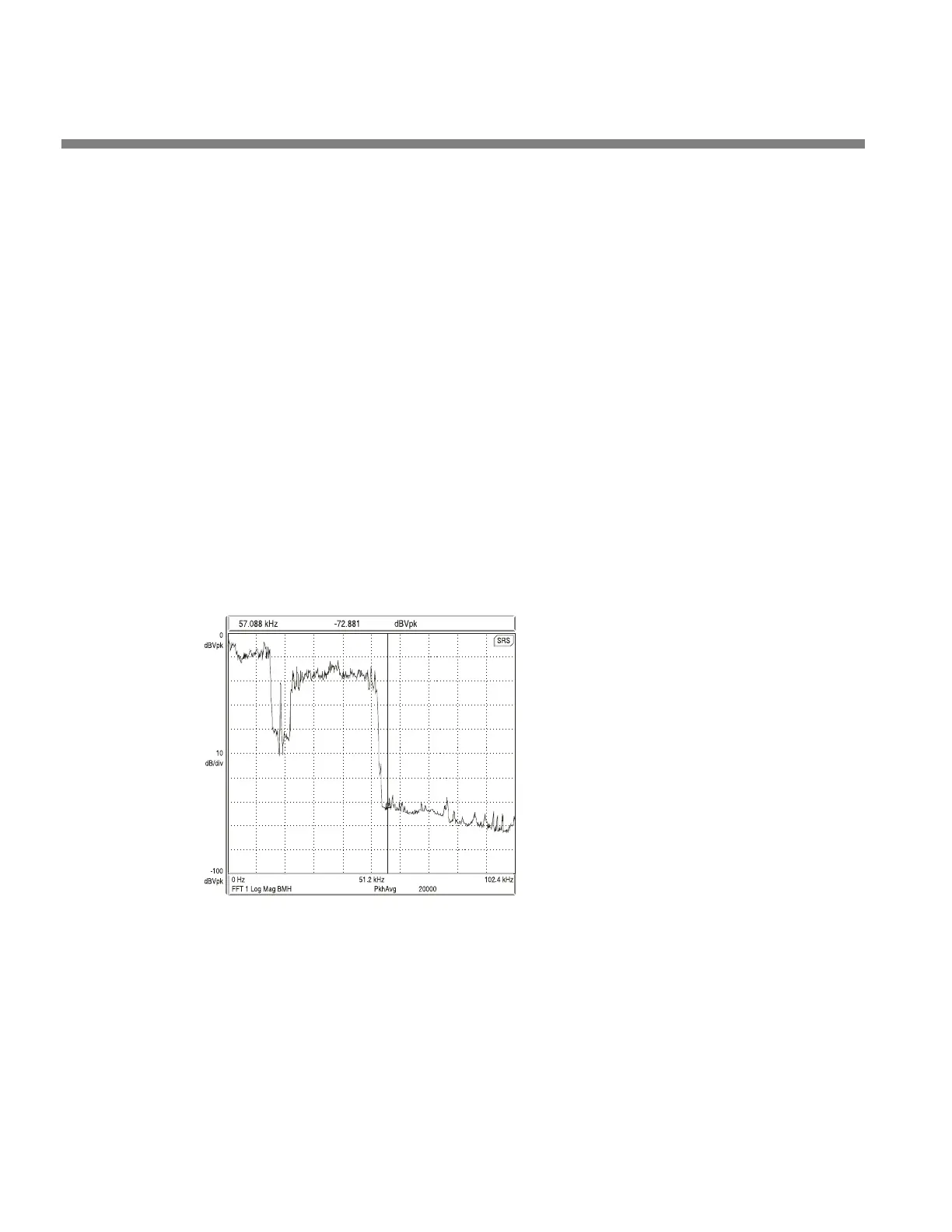5-4
TROUBLESHOOTING ORBAN MODEL 8600
Whistle on Air, Perhaps Only in Stereo Reception
The most likely cause is oscillation in the analog input or output circuitry. If the oscil-
lation is in the output circuitry and is between 23 and 53 kHz, it will be detected in a
receiver’s stereo decoder and translated down into the audible range.
If you encounter this problem, check the analog or digital outputs with a spectrum
analyzer to see if the spurious tone can be detected here. If it appears at both out-
puts, it is probably an input problem. If it only appears at the analog output, then it
is likely a problem with the left/right DACs or other analog circuitry. If it appears on-
ly when you use the composite output, then it is likely a problem in the composite
DACs or output amplifiers.
A whistle could also be caused by power supply oscillation, STL problems, or exciter
problems.
Interference from stereo into SCA
A properly operating 8600 generates an immaculately clean baseband, with pro-
gram-correlated noise below –80 dB above 57 kHz even when the composite limiter
is used aggressively. If the 8600 and the rest of the transmission system are operat-
ing correctly, subcarriers should experience no interference.
Interference from the stereo into a subcarrier is best diagnosed with a spectrum an-
alyzer. First examine the spectrum of the 8600’s composite output to verify that pro-
gram correlated noise is less than –80
dB below 100% modulation from 57 to
100 kHz. Any inadvertent composite
clipping will dramatically degrade this
protection. Make sure that the link be-
tween the 8600’s composite output
and the transmitter has sufficient
headroom.
If the exciter is nonlinear, this can cause
crosstalk. In general, a properly operat-
ing exciter should have less than 0.1%
THD at high frequencies to achieve cor-
rect operation with subcarriers.
To prevent truncation of the higher-
order Bessel sidebands of the FM mod-
ulation, the RF system following the
exciter must be wideband (better than
±500 kHz) and must have symmetrical
group delay around the carrier frequency. An incorrectly tuned transmitter can ex-
hibit an asymmetrical passband that will greatly increase crosstalk into subcarriers.
Amplitude modulation of the carrier that is synchronous with the program (“syn-
chronous AM”) can cause program-related crosstalk into subcarriers. Synchronous
AM should be better than 35 dB below 100% modulation as measured on a syn-
chronous AM detector with standard FM de-emphasis (50µs or 75µs).
Figure 5-1: Typical 8700 baseband spectrum
with heavy processing, 0-100 kHz.

